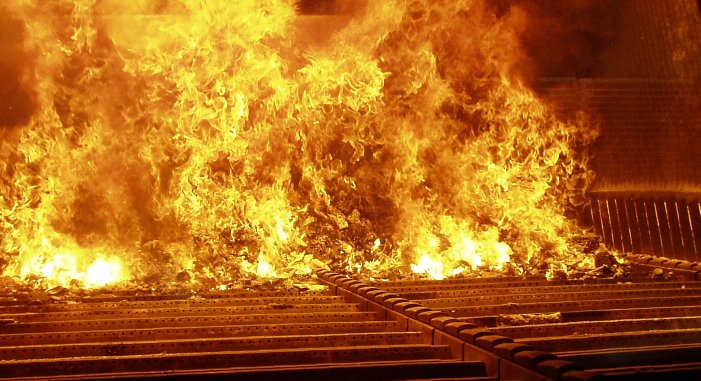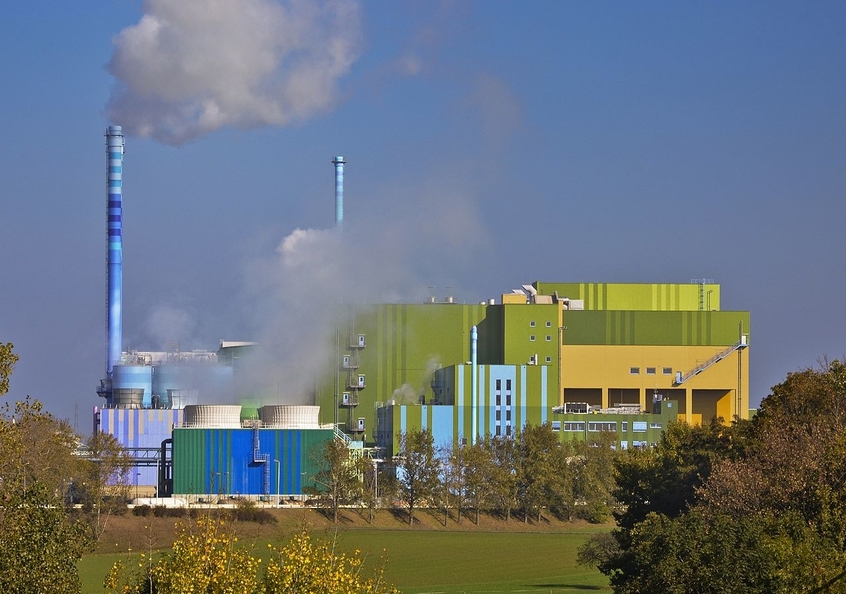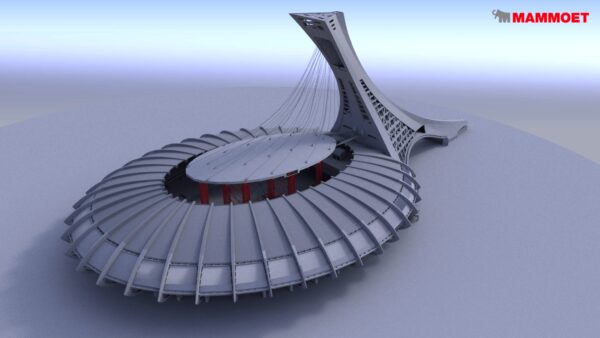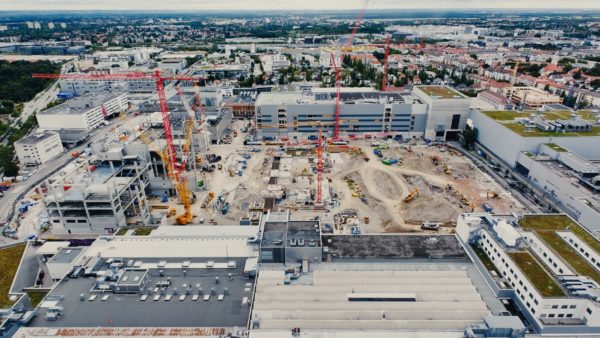With contractors getting their fingers burnt on energy-from-waste projects, Roddy Wilkie, Partner and Head of Energy at HKA, explains why the UK, uniquely, is having such trouble, and urges the construction supply chain to learn the lessons, because the sector will only grow.
It is now (almost) universally accepted that our warming world needs alternatives both to burning fossil fuels and burying waste. Turning waste into energy may seem an ideal solution, but it’s not necessarily that simple.
While continental contractors are well versed in the intricacies of EfW projects, some of their UK counterparts approached them like any other major construction scheme – a ‘kit in a shed’, as one complacent contractor told a client
Problems can occur on any construction project, large or small. As a string of widely reported delays, cost overruns, contractual disputes and even failed projects in the UK and elsewhere show, the waste-to-energy sector seems to suffer more than its fair share.
Energy can be recovered from various wastes and in a variety of ways. In anaerobic digestors, bacteria break down organic matter in the absence of oxygen, generating gas to be used as fuel for heat and power. Waste wood and chip can also be burnt as fuel. Both domestic waste (solid municipal waste) and trade waste can be processed to form a solid fuel burned in cement kilns as well as other industrial plants, again producing heat and power.
These feedstocks are relatively homogenous and consistent, unlike the raw waste stream from refuse collections. It is the energy-from-waste (EfW) plants burning the residual waste left after recyclables have been removed that pose the greater technical challenges for the waste management sector, and it seems, engineering and construction.
Profits up in smoke
The generation of electricity in EfW plants is well established across Europe and, within the last decade, the number of EfW plants in the UK has mushroomed to around 50. That pattern of experience partly explains the heavy losses racked up by some major British contractors and withdrawals from the sector after getting fingers burnt.
While continental contractors are well versed in the intricacies of EfW projects, some of their UK counterparts approached them like any other major construction scheme – a ‘kit in a shed’, as at least one complacent contractor has told a client. The reality is that a modern integrated waste management plant is essentially a process plant, or mini power station. Unlike other process plants, however, it has to deal with a feedstock that varies hugely in composition and calorific value.
Local authorities, as clients, require that plants accept all kinds of material delivered by their waste collection services within quite broad parameters. By contrast, emission control limits under the EU Industrial Emissions Directive make energy-from-waste one of the most tightly regulated industrial processes in Europe. This places significant risk on the shoulders of those who design, build and operate EfW facilities.

Baptism of fire for contractors: Municipal solid waste during combustion in a moving grate incinerator (Ole Poulsen/Public domain)
Under a design and build contract, the contractor will usually be liable contractually and commercially for the technical and operational risks. It is not uncommon for design phases to overrun, leading to extra design cost and often impacting the programme’s critical path, with knock-on effects on procurement, civils and M&E works. Additional costs, from design work and preliminaries to subcontractors, are unlikely to be recovered.
Naive novices
Main contractors have underestimated the complexity of waste projects, which require multiple subcontractors for major elements, from the boiler to turbine, piping to cabling and insulation. A rigorous procurement process is essential to assemble a team of proficient specialist contractors.
On some more recent projects new players in the EfW sector have suffered from a lack of specialist expertise in-house.
Reliance on a workforce without the necessary skills, know-how or commitment can compromise outcomes from design through construction. And commercial teams themselves are often transient, which can undermine the quality of record-keeping and severely weaken any prospect of commercial recovery in a dispute.
The moving-grate technology used in the vast majority of many EfW plants has proven reasonably effective, subject to acceptable tolerances in design and installation. However, some waste plants are complicated, perhaps overly so, by local authority clients. Incorporating other technologies – such as composting, gas production and refuse-derived fuel – makes these multi-faceted facilities more politically marketable to communities, at the cost of even more complexity.
Alternative technologies such as gasification and pyrolysis are still described as ’emerging’ despite the completion of a series of different designs across the UK and Europe in recent years. Gasification involves thermal treatment of waste in an environment with little or no oxygen to produce ‘syngas’, which can be burnt as fuel. So far, the nearest success stories for gasification are in Japan, where the technology is reported to be working well.
Running from risk
Another complicating factor in the recent history of waste projects in the UK has been the Private Finance Initiative (PFI). Most EfW plants were financed privately and contractors are appointed on EPC (Engineering, Procurement, Construction) contract terms. In their dash to grab a share of this buoyant alternative energy market, major contractors found they were allocated a heavy share of risk, passed from local and national government to waste companies on 25-year contracts, who transferred much of the responsibility onto contractors.

Continental contractors are better versed in the intricacies of EfW projects. This one is in the Höchst industrial park, Hesse, Germany (Norbert Nagel/CC BY-SA 3.0)
Commissioning of EfW plants should take around six months, but it can be 12-18 months before they operate smoothly at capacity. As each facility uses a different combination of often newly developed technologies, production has to be suspended, equipment modified, before re-starting.
The learning curve remains relatively steep. Penalties usually apply at handover after commissioning, but each week’s delay ratchets up the cost until the cap – typically 20% of contract value – is reached, perhaps six months to a year later. Contractors also remain potentially liable for latent defects.
After encountering problems on their first UK project, international construction and engineering groups have tended to recalibrate and apply the lessons on subsequent contracts. By contrast, several domestic contractors have turned their backs on the sector after their ‘baptism of fire’.
The UK’s top contractors have become more risk-averse when it comes to technically and contractually challenging contracts. Carillion’s demise and the widely reported difficulties of waste projects will deepen that caution in the current climate of economic uncertainty.
Nevertheless, the UK has a significant capacity gap in waste management infrastructure. So where does the sector go from here?
Where there’s muck
Construction costs are likely to rise as more savvy contractors fully price the risks. These should lessen: as PFI/PFI2 ends, waste management companies predict that less risk will be transferred to EPC contractors, so it is shared more equitably.
Lower-tier contractors may step up to the plate, though closer control of procurement and management of multiple members of the project team will be required from the client side.
There is evidence that some failings to date stem from main contractors splitting works into too many subcontract packages and losing control of programmes before EfW technologies become operational. As on any complex project, the basics of project management, change control, interfacing, division of responsibilities, and coordination need to be sound – as well as procurement – to secure a successful outcome.
Globally, capital expenditure in the EfW sector is forecast to triple from 2017’s US$12.9 billion estimate to US$40 billion by 2023. The EIC (Energy Industries Council) predicts that the UK sector’s capacity will double over the coming decade. It sees a growing role for combined heat and power gasification, and other new thermochemical and biochemical technologies.
More energy is being recovered from residual waste materials in the UK, but still lags far behind continental Europe. One consequence of the capacity gap is that an estimated 3.5 million tonnes of refuse-derived fuel – enough for Birmingham’s annual energy needs – are exported from the UK each year to power homes and factories in other countries.
Turning waste into energy is a low-carbon solution. While its eligibility for subsidy as a renewable source is dependent on state rules, recovering energy from waste displaces fossil fuels and increases energy security. The engineering and construction sector must focus its energies on delivering that capacity securely.
- HKA is a construction claims and dispute resolution firm
Top image: One that worked: Viridor’s 24MW Ardley EfW plant, Oxfordshire. Construction started in November 2011 and it was approved for operation in February 2015 (Jeroen Komen/CC BY-SA 2.0)
Comments
Comments are closed.











There are a few factors not fully considered in this report which I feel have been overlooked. I don’t consider that the UK contraors are as incompetent as the report implies.
The report quite rightly states that Continental contractors are well versed in these types of projects which introduces a problem of project management for the UK contractors. Most suppliers of the equipment are overseas which ultimately means that even with “partnership” type contract the Continental Process contractor will always try to control the contract and not be willing to compromise on design procedures.
This is important as the Process contractor will be the main discipline and usually ramps up design development before other disciplines come on board ie Architecture, Structural ME etc.
Another issue is the clients desire to have an architecturally aesthetic looking building, which as you have seen can be very complex to design and build never mind the extraordinary expense.
EfW plants have been designed for decades; often new projects contain similarities to projects already built elsewhere. The process is fundamentally the same and I firmly believe that a radical approach to how we build these plant is required.
A study of plants built over the last 15 years would provide sufficient information to derive a modular more standardized approach to design and build of EfW plants. It would be a worthwhile study to develop a modular approach given the potential in costs savings, improved design, reduced time to completion and commissioning.
Until waste authorities embrace waste to energy practices that are predominately “steam reform” whereby waste is broken down into individual materials that can be re-used for a multitude of things, waste reform will remain a nightmare and prohibitively expensive.
Of course the main issue here is the cost of energy to run such a plant. My company is developing a revolutionary engine that operates utilising the ambient, thus power/energy will become a minimal cost that will allow steam reform to be properly implemented. Ultimately the development of this engine will address many areas.
Imagine every application whereby an engine is utilised being replaceable with a like for like sized engine capable of the same outputs that did not require fuel and gave off zero emissions or particulate pollution what could be achieved…watch this space…and no, not perpetual motion blah ha.